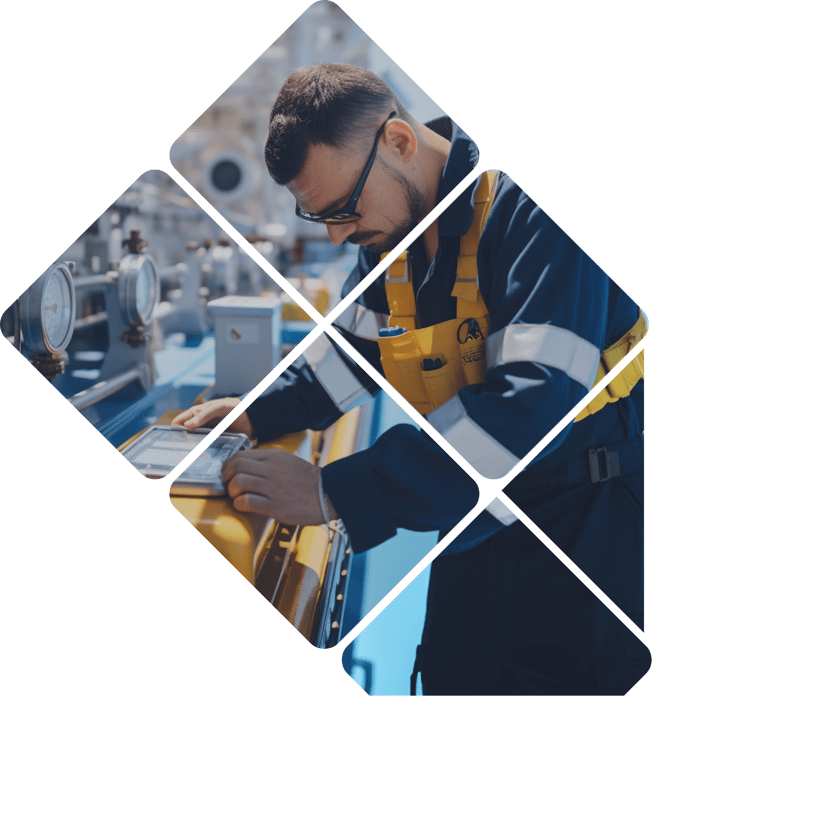Launching a one-stop portal for crew training
The new myBruusgaard portal combines training, testing, and certification into one...

When it comes to gas detection, shipowners have plenty of incentives to go beyond what laws and regulations require of them.
All fleet operators are required by law to equip their vessels with gas detection equipment. However, not all such systems are created equal; the regulatory landscape is complex and many shipowners struggle to maintain a coordinated approach, both in terms of usage, maintenance and procurement.
Lack of precision adds cost and reduces safety. Additionally, many contractors require their suppliers to exceed the minimum safety requirements, meaning a lesser gas detection system can disqualify a vessel from a contract. Thus, shipowners have plenty of incentive to go beyond what they are required to by law.
The cargo and ship type will determine which detector with which sensor will adequately perform the correct detection. For example, a chemical tanker represents a different scenario than a crude oil tanker does.
Sometimes yard supply (prior to launch) install generic instruments that only loosely match the ship’s requirements. If a vetting is coming up, the crew might discover that they need to add equipment to their gas detection kit. Typically, this forces them to shore where they visit with a local supplier. He or she may give them an instrument that perhaps only partially covers their needs.
By outsourcing your gas detection requirements to an expert, all you have to do is provide a description of your ship(s), your cargo, the regulations you need to adhere to and so forth. They will then evaluate your needs and suggest a set of detectors and sensors that precisely match your requirements.

The Bruusgaard System.
Read more: Gas Detection at Sea: The Bruusgaard System Explained
Gas detection equipment requires periodic maintenance and testing. Most shipowners ship their equipment to onshore service facilities, but this is not a legal requirement. Some suppliers, however, insist on taking equipment to shore for service. Shipowners will have to comply to gain a valid stamp of approval.
Shipping onshore is unnecessary. To the contrary, there actually is a strong case for performing testing and maintenance on board.
First of all, you’re required to be able to calibrate on board. Secondly, you get more familiar with the equipment by doing everything on board. Inhouse expertise can be crucial in the event of a situation that calls for a double-check of the instrument or if you’re faced with an unannounced vetting. In these situations, you will have a problem if you cannot calibrate your equipment.
A third benefit of in-house servicing is that the crew member tasked with maintaining and testing the equipment (typically the captain, the chief officer, or the chief engineer) can communicate directly with the supplier. This provides optimal knowledge and familiarity with the equipment.
Sampling is essential to crew safety. Before entering a manhole, a thorough mapping of the enclosed space should be performed.
Mechanical ventilation is an effective tool, but gases can remain trapped in pockets, either close to the floor or close to the ceiling. Therefore, sampling should be performed at different locations, ideally in three dimensions. At minimum, make sure to get a read on the lower, middle, and top layers of the atmosphere.
Sampling is to be undertaken:
Arrange a run-through with all relevant personnel before any work is done in a hazardous area. Remind them of the routines and safety precautions. Calibrate your equipment as needed.
A prerequisite for effective sampling is appropriate equipment of trade-approved quality, like tubes with sufficient reach. All equipment intended for atmosphere analysis must be:
Finally, the results of the measurements should be controlled by at least two competent persons.
You need to be able to detect:
Certain vessels, like LPG or chemical tankers, need more sophisticated detection diversity capabilities. A Riken Keiki GX-6000 will meet most such demands.
When sampling for a particular gas, certain substances can interfere and skew the reading results. In such cases, it is necessary to employ disciplinary factors and perhaps deactivate some other sensors.
Gas detection at sea is not done for research purposes; you measure to determine whether a space is safe or not. In most cases, all your gas detector needs to provide is either a red or a green light.
Detector tubes cost less but can be intricate to use. They also yield high-resolution readings that often exceed what is required. On the other hand, an instrument like the Riken Keiki GX-6000 returns either a green or a red light. It simplifies and speeds up the sampling process substantially.
After sampling with an instrument, you should re-check before further use. There are a couple of recommended steps to take:
Gas detection is a complex discipline, but there is a way to make it simpler, safer and more cost-effective. Getting an expert partner involved can help you do more with less, because you will be able to:

Post by Martin Bruusgaard
Similar subjects
Onboard Detection Gas Detection The Bruusgaard System Gas Safety
Never miss out on industry news, reviews and articles.
The new myBruusgaard portal combines training, testing, and certification into one...
Compliant CO₂ testing starts with proper equipment and operational routines.
The most important shift is clear: atmospheric testing must go beyond oxygen.
Optimal safety. Minimal effort.

Providing solutions for




